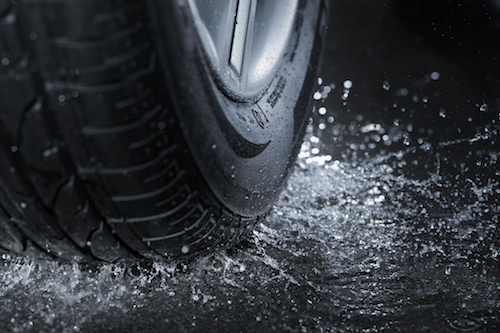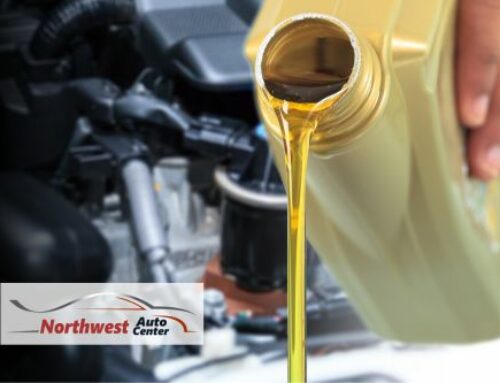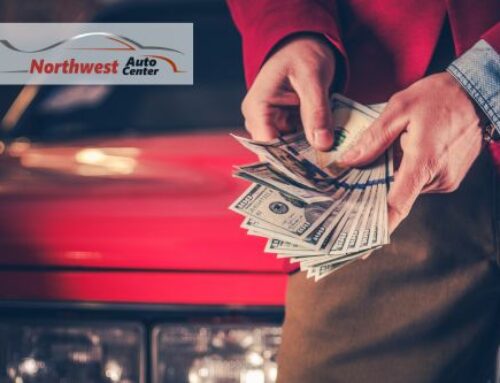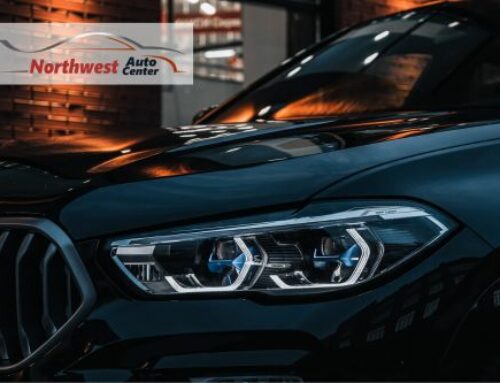Tires can be windows to the health of your car—if you know how to look. Some may find this hard to believe. But, tires are sensitive. They begin to wear differently if something isn’t right, which means your tire tread is trying to tell you something. This can include inflation issues, issues with your driving, alignment problems and even problems in your suspension or brake systems.
Center Tire Tread Wear
Take a peek at your tires. If you see the center strip of your tire is more worn than the sides or edges of the tire that means your tire is overinflated. Overinflation causes tires to bulge in the center, meaning this is the spot on the tire connecting the most with the road.
It is important to follow your tires’ and car’s recommended psi. The recommended tire psi can be found on the outer wall of your tire, on a sticker found inside the front passenger door or in your owner’s manual.
Side/Shoulder Tire Tread Wear
If your tires are showing wear on the sides/edges/shoulders more than the center, this is a result of underinflation. Your tires are not as spherical as they should be causing the sides to take most of the weight.
Once again, follow your tires’ and car’s recommended psi. However, slightly underinflated tires can give you more grip when driving in winter conditions. If you are regularly relying on underinflating your tires in the winter, look into investing in snow or winter tires. Irregular tread on your tires can eventually lead to alignment issues if left untreated.
Wear on One Side
When your tires are showing wear on one side more than the other, it means something is wrong with the wheel alignment. Two common alignment issues are:
- Camber. The way your wheel leans. Negative camber means your tire is leaning in, with the top closer to the center of the car. Positive means the tire is leaning away, with the top of the tire farther away from the center.
- Toeing. Look down at your feet. When your feet or tires point in, it is called toe-in. When your feet or tires point out, it is called toe-out.
Wearing on one side can be addressed by taking your car in for a wheel realignment.
Inner Side Wear
When the inner side/edge is showing more wear this is an indication of negative camber or toe-in alignment issues.
Outer Side Wear
When the outer side/edge is wearing faster, it can indicate a few things, not all alignment. It could be an indication of positive camber or tow-out alignment issue. But, it could also be an issue with your driving. Outer side wear is seen on tires whose drivers take turns too quickly. Slow down and save your tires.
Cupping/Scalloping
Cupping/Scalloping can both be seen and felt while driving (though it can be mistaken for bad or bumpy road conditions). Cupping is when your tread begins to show patterned scalloping or scooping indentations. And it doesn’t come bearing good news.
Cupping is most often a suspension issue or an issue with suspension components including bushings, ball joints, and springs. In rare cases, cupping can be the result of an out-of-balance wheel. However, if you notice cupping, take your vehicle in for immediate inspection and repair.
Feathering
Feathering is hard to notice, but it can be felt when running your hands along your tire. Feathering describes when individual tread blocks begin to resemble a ramp, occurring in a sideways direction. One side of the block will be flat, gradually getting thicker until the steep, angled drop-off on the other side.
Feathering is a result of excessive toeing of your tires. The toeing is causing your tires to interact to the road like cheese interacts with a grader. The problem can be fixed with a wheel realignment. Feathering can also be a result of aggressive driving and driving around corners too quickly.
Heel-Toe Wear
Like feathering, but the ramp runs from front to back, not side to side. Heel-Toe wear is most likely a result of infrequent or neglecting to rotate your tires regularly.
Flat Spot Wear
If your tires are showing normal wear, but have a noticeable smooth spot or spots, this is flat spot wear. It is a result of emergency braking. However, it can also indicate brake problems and issue with your brake’s foundation. If you do not recall taking a sudden stop recently, have your vehicle’s brakes checked immediately.
Sidewall
While not directly involved with tire tread, if you notice sidewall damage to your tire the solution is simple. Stop parking so close to curbs.
Your tire tread is important to keep you safely driving on the road. When that grip is compromised, things can turn slick quickly. Your tire tread can also let you know when other things are wrong with your vehicle—big things like suspension and brake issues. It is important to regularly have your tires inspected, balanced and rotated. Want to schedule an appointment to fix a potential issue? Call Northwest Auto Center at 281.894.8880.







[…] only does it reduce wear on your tires, but it also saves you money. Proper inflation reduces “rolling resistance,” which […]
[…] a moment and check your tire’s tread as well. Look for tread depth and irregular wear patterns that indicate more critical problems and reduce your grip and traction on slick […]
[…] Wheel components including tire tread depth. […]
[…] Uneven tire pressure […]
[…] If your car isn’t absorbing bump impact well because of a bad strut, you will be able to see in the way your tires wear down. Uneven impact on your car means uneven tracks on your tires. […]